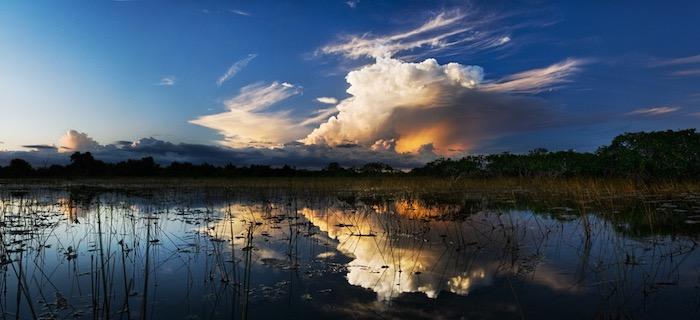
Concerns have been raised that those planning Everglades restoration are not fully considering climate change impacts/NPS
A review of work to restore the normal ecology of the Everglades by the National Academies of Sciences urges that a re-assessment be done to ensure the planning and projects are keeping climate change and its impacts in mind.
"The committee remains unconvinced that the current, individual, project-level planning approach is an effective means of reassessing the systemwide, scientific-guiding vision for restoration in light of the extended expected timeframe for completing the (Comprehensive Everglades Restoration Plan), changing system conditions, and the evolving understanding of the future Everglades ecosystem," the NAS's committee assigned to monitor the restoration progress said in its Seventh Biennial Review of the massive project.
The CERP has called for surface water storage reservoirs and aquifer storage and recovery projects to potentially remove 240 miles of canals and levees to "restore the historic overland sheetflow (of water) through the Everglades wetlands." As envisioned, the restoration of the Everglades is not entirely wildlife-related. Rather, it's an ecosystem-wide endeavor that will benefit not only alligators, crocodiles, snakes, birds, fish and vegetation, but also south Florida's human populations.
But the problem with the current work, according to the NAS review, is the planning does not seem to be taking the impacts of climate change, such as sea level rise, hotter temperatures, possible changes in rainfall, into consideration.
"... a new integrated, systemwide modeling of the planned projects is needed to understand the combined benefits relative to restoration objectives," the report said. "More rigorous analysis of the potential effects of climate change and sea-level rise on restoration outcomes is necessary in planning for all projects, so that restoration investments are designed for and more resilient to future conditions."
Restoring the Everglades could prove elusive.
The first Committee on Independent Scientific Review of Everglades Restoration Progress identified five critical components of Everglades restoration (NRC, 2007):
1. Enough water storage capacity combined with operations that allow for appropriate volumes of water to support healthy estuaries and the return of sheet flow through the Everglades ecosystem while meeting other demands for water;
2. Mechanisms for delivering and distributing the water to the natural system in a way that resembles historical flow patterns, affecting volume, depth, velocity, direction, distribution, and timing of flows;
3. Barriers to eastward seepage of water so that higher water levels can be maintained in parts of the Everglades ecosystem without compromising the current levels of flood protection of developed areas as required by the CERP;
4. Methods for securing water quality conditions compatible with restoration goals for a natural system that was inherently extremely nutrient poor, particularly with respect to phosphorus; and
5. Retention, improvement, and expansion of the full range of habitats by preventing further losses of critical wetland and estuarine habitats, and by protecting lands that could usefully be part of the restored ecosystem.
If these five critical components of restoration are achieved and the difficult problem of invasive species can be managed, then the basic physical, chemical, and biological processes that created the historical Everglades can once again work to create and sustain a functional mosaic of biotic communities that resemble what was distinctive about the historical Everglades albeit of a reduced scale.
At the National Parks Conservation Association, Cara Capp said the problem always facing CERP has been a lack of funding.
"The CERP is chronically underfunded," Capp, NPCA's Everglades restoration manager, said Monday. "The good news is that we have the science in place, we know what needs to be done to restore the Everglades. But the challenge is getting the funds in place.”
Climate change brings more urgency to that, she added.
"I think NPCA and other groups have said that we need to better include climate change adaptation," said Capp. "Being climate resilient is an important one. We want to make sure the projects are adapted to the changes that are coming. We also want to execute these projects quickly. Climate change makes things more important.”



Comments
I have been to Everglades NP many, many times (it is the closest NP to my home) and it is one of my favorite parks. I hope, with a change of leadership in Tallahassee in 6 days, that science and climate change will once again be believed. Scott has made a mess of our state and particularly where I live - we have contended with red tide and blue-green algae for months because of a lack of science and a lack of funding. Let's hope things change!
As the former County Engineer for Collier County, Florida and a frequent canoeist within the 10,000 Islands National Wildlife Refuge, I'm here to tell you that when the sea level rises six ft. by the year 2100, which is within my grandchildren's lifetimes, there will be no Everglades, and no US 41 east of Naples, and there is nothing you can do to stop the water coming up out of the ground. And if Jim Hansen is right about a 15 ft rise, you'll have panthers north of Lake Okeechobee. It is what it is. I'm just waiting to see the 2019 IPCC projections, but we might be wasting a lot of money on "restoration" to some imagined restore point that would be better spent planning a retreat. Then again, it's only our children's money.